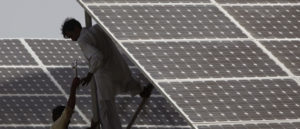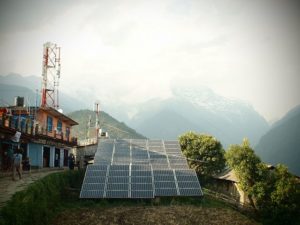Blog
How can rural Pakistani communities’ electricity needs be met?
Written by Mark Hawkins
December 3, 2019

Have you ever been without electricity for a day? For a week? For a month? How did you cope? 840 million people are still without access to electricity, with plenty more facing regular breaks in their electrical supply. This lack of energy has acute consequences. They include lack of light for school children to study by and an inability to use lifesaving medical equipment. Generally, rural populations are much more likely to lack electricity. One key reason is the complexity of extending national grids over vast distances. A second reason is the relative poverty rural communities often face. It is important that we produce this electricity renewably. Otherwise, if close to a billion people begin their access to electricity through fossil fuels, we would see negative impacts on local health, the environment and the global climate.
The Case of Pakistan

Pakistan is a case in point. About 68% of Pakistanis live in rural areas, 37% of which lack electricity. Pakistan’s main source of energy is fossil fuels. Its supply is precarious, as the country lacks large reserves of its own and foreign exchange reserves. As a result, Pakistan suffers from irregular energy supply. This means it must use load shedding, a method whereby energy providers stop all energy supply to stop the entire system going down during times of high supply.
A possible solution is off-grid energy supply through renewables. Renewables have been dropping in price for some time now, and are on an equal playing field with traditional fuels. In rural Balochistan, Pakistan’s large western province, lack of electricity is particularly acute. On top of this the province is very arid and has a low population density. This makes it hard to reach rural communities with electricity from the grid.
There is hope. Balochistan has, according to a recent study by Syed Ahsan Ali Shah et al., the best solar irradiance value in the world. The authors predict that a possible 126000 metric tons of CO2 could be saved if all houses without electricity in the province deployed renewable energy . Elsewhere in Pakistan’s more mountainous areas, wind energy has been proposed as a possible alternative. To solve these problems, the government has proposed to eliminate taxes on solar and wind energy. Additionally, a number of small-scale renewable projects are already underway. These are moves in the right direction. Much more needs to be done however to ensure constant access to electricity. Luckily there are a number of cases from which to draw inspiration.
Global Electrification

All over the world, rural populations are using off-grid solar, wind and hydroelectric projects to meet their energy needs. Afghanistan, Nepal and Bhutan increased total electricity supply the most in the 10 years between 2006 and 2016. In Afghanistan, the population with electricity access increased from 28% to 84%. Two thirds of this increase are off-grid. Moreover, and even more impressive, Bhutan reached 100% electrification rate, partly by equipping rural households with solar panels.
Local involvement in any development project is key. Electrification is no different. In Australia, the First Nation Renewable Alliance was formed by 25 indigenous leaders to provide local indigenous communities in New South Wales with access to more affordable electricity. They aim to bypass the incredibly expensive grid. First nations in Canada’s remote north inspired the project, as they have been investing in renewables as a way to meet local energy needs for some time now.
Some Challenges
There are challenges of course. In Balochistan, for example, relatively few people have technical training and local renewable technology will require operational maintenance. This is an opportunity to create rural jobs, and an incentive to improving the educational infrastructure in the province.
A further challenge is what to do with the extra energy in times of glut. The advances in battery technology as well as storage solutions such as the flywheel system; a device that stores rotational energy, offer possible solutions. However, these are expensive.
Education is a key tool in fighting climate change. Balochistan is no different. Many rural households would like to install solar cells. However, they lack access to the most basic information on how to do this.
The final, and perhaps most intractable challenge is the need to gain access to reliable flows of finance. Renewables have dropped drastically in cost, but even so these technologies have constant operational and maintenance costs. To achieve SDG 7 by 2030 (ensure access to affordable, reliable, sustainable and modern energy for all), government investment and donor aid are both needed. This would be a game changer for rural communities the world over.
Mark Hawkins is currently studying for an MSc in Environment, Politics and Development at SOAS University of London.

